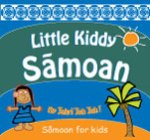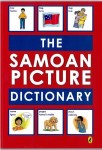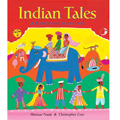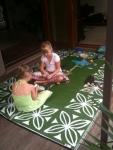You don’t see the world in black & white. You see it in the many vivid colors of browns, beige, olives and yellows – a multicultural world. And you’re a born teacher too, always looking for opportunities to teach kids and adults about the importance of a multicultural society. Well, then, here is a great way to celebrate different cultures in any environment – Multicultural Music!
Why Music?
There is a staggering amount of human diversity on our planet. We might not always understand each others traditions, customs and beliefs but the one thing that has the ability to transcend everything is music. It is a very deep-rooted and valid cultural expression. Music, when played in a classroom it creates a fun and upbeat atmosphere, sustains student attention, improves concentration and increases interaction while building a classroom community. When played in the car, it can positively uplift you, reduce stress and relieve frustration.
How Music Benefits the Classroom
Learning through music is not a strict top-down activity; it’s multi-layered learning. Music is a natural way of teaching multiculturalism because it allows the listener to experience and feel the culture. Also, the learner is immersed in a safe environment while the learning is happening. Even if verbal exchange (between teacher and student) is minimal, it leads students into discovering and reflecting on the new experience. Playing music from a particular culture helps students imagine that they are part of that community and be a part of an aural tradition.
Incorporating Music in a Classroom Environment
Here are some tips on how to use Multicultural music in the classroom:
1. Multicultural music can be used to teach educational content. For example: When teaching rhymes to lower primary kids, consider using Karadi Tales Rhyming Book & CD Series to teach Indian rhymes. This will introduce the child to meter, rhythm pattern and context that would normally be out of their reach.
2. Use music to introduce a new language. If you have plans to introduce your classroom to a new language, begin by showcasing music that’s familiar, fun and easy-to-learn. This way, the chances of a child being open to a foreign language are higher. Recommended resource: German – Teach Me German Christmas Songs, Frohliche Weinhnachten Teach Me traditional Songs & Traditions, Worldwide – Latin Playground Activity Kit – Book & CD

3. Use multicultural music to enhance educational content. Music helps students get a deeper feel for and appreciate the educational content you are imparting. In your geography/ history classroom use Celebrate the Human Race CD and Book Kit to visit The Nile, Rio, The Grand Canyon, Iqazu Falls, Mount Everest, Yosemite Valley and many other exciting places around the world in song. If environmental concerns are what you’re highlighting, get a copy of Everything’s Gone Green, Environmental CD by the Fabulous Lemon Drops.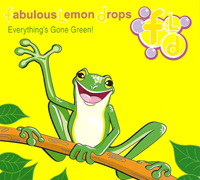

4. Create an atmosphere that’s conducive to teaching. Most students might fidget in class or complain of boredom when faced with reams and reams of text. Switch text with music for a more engaged learning process. For example: When teaching older students about the history of Aboriginal music, use Aria Award Winner – Geoffrey Gurrumul Yunupingu’s album Gurrumul. The songs are largely sung in indigenous languages and you can challenge your students to identify them. If you are trying to teach your class the history of Africa, we recommend resources such as Songs and stories from Uganda Book and CD, African Playground Putumayo CD etc.
Music as a Important Multicultural Resource in Other Environments
Maybe it’s not a child but an adult who needs a multicultural exposure. Then, music is your best friend because you can take it out of the classroom to anywhere you like – car, home, work place, bus etc. Here are some tips on how to use multicultural music in other environments:
1. In the home. Music can be extremely stimulating as well as completely relaxing. To brighten up a kid’s play date, put on Sesame Street Playground CD in 12 different languages. If you’re winding up for the day, consider Celtic Dreamland Sleeptime CD which focuses on the softer side of Celtic music, harvested from the rich musical traditions of Ireland, Scotland, eastern Canada and beyond. The CD has songs that are perfect for the slumbering child, meditating mom and dad, or the weary worker desperate for a little quiet relaxation.

2. On a drive. Fill long trips with laughter and make it subtly educational by picking the latest release in the award-winning Playground CD series from Putumayo Kids. The new album presents a multilingual collection of animal-themed songs from around the world. Other recommendations are: Putumayo Hawaiian Playground CD with Hawaiian ukuleles, slide guitars, amusing lyrics and enchanting voices that will charm children and adults alike, Worldwide – Jazz Playground Putumayo CD and Worldwide – Rock & Roll Putumayo CD.
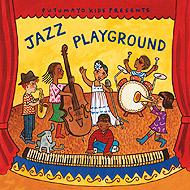
3. At the work place. Introduce your co-workers to sounds from around world with sources like Lietuviskos Polkos – Lithuanian Music, “Malk” Saltwater Band CD with Geoffrey Gurrumbul, Arabic Groove Putumayo CD etc.

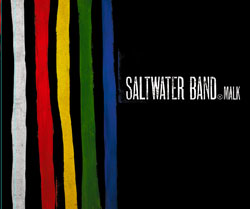


4. In the day care center. Putumayo Kids’ Acoustic Dreamland and Multicultural Lullabies around the World CD are wonderful to soothe the tiny tots.


No matter what language we speak or where we are from, music binds us all. Music is also a great teacher of all things new and wonderful, so, pick up a multicultural CD to create a harmonious multicultural world.


